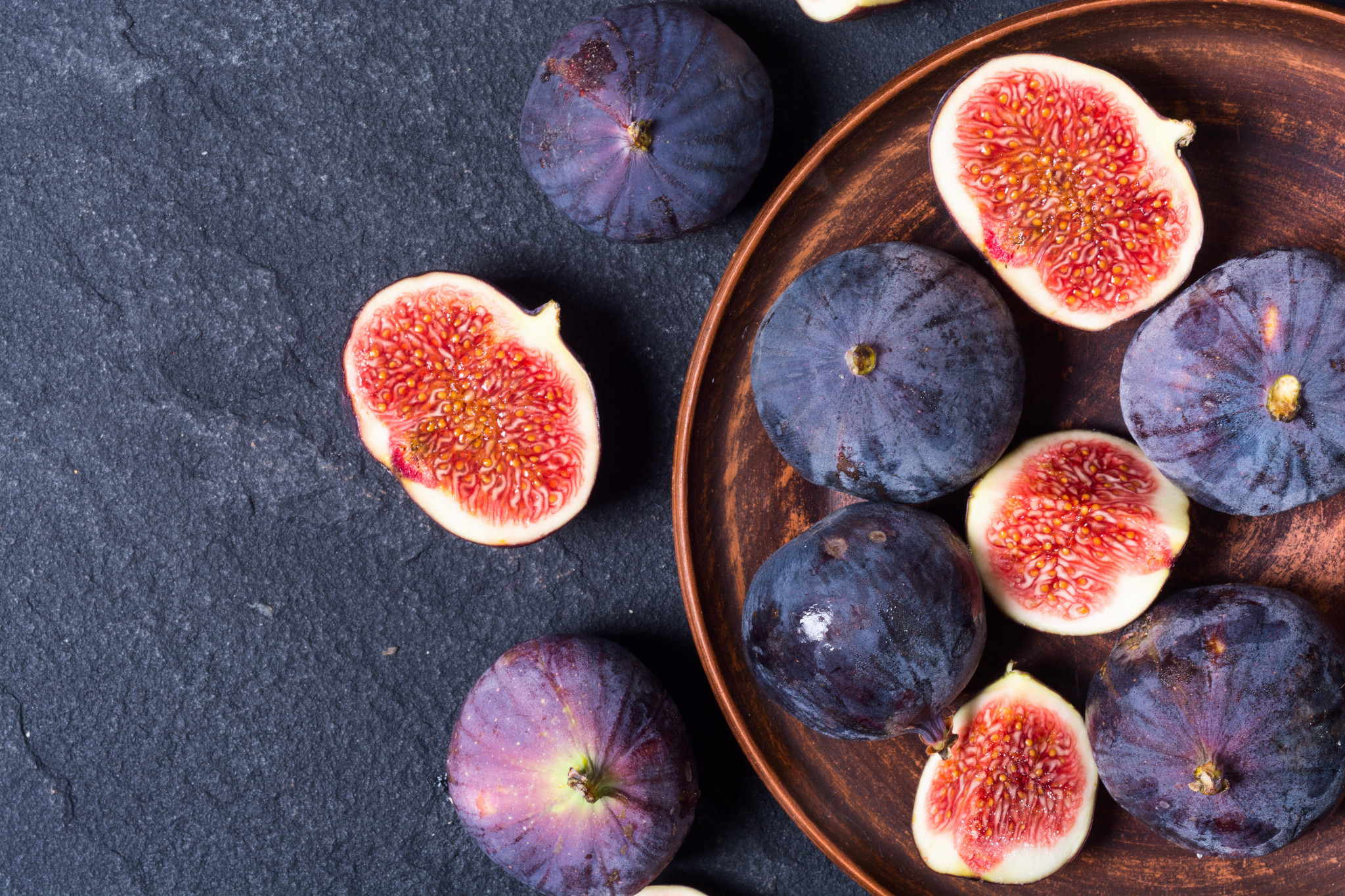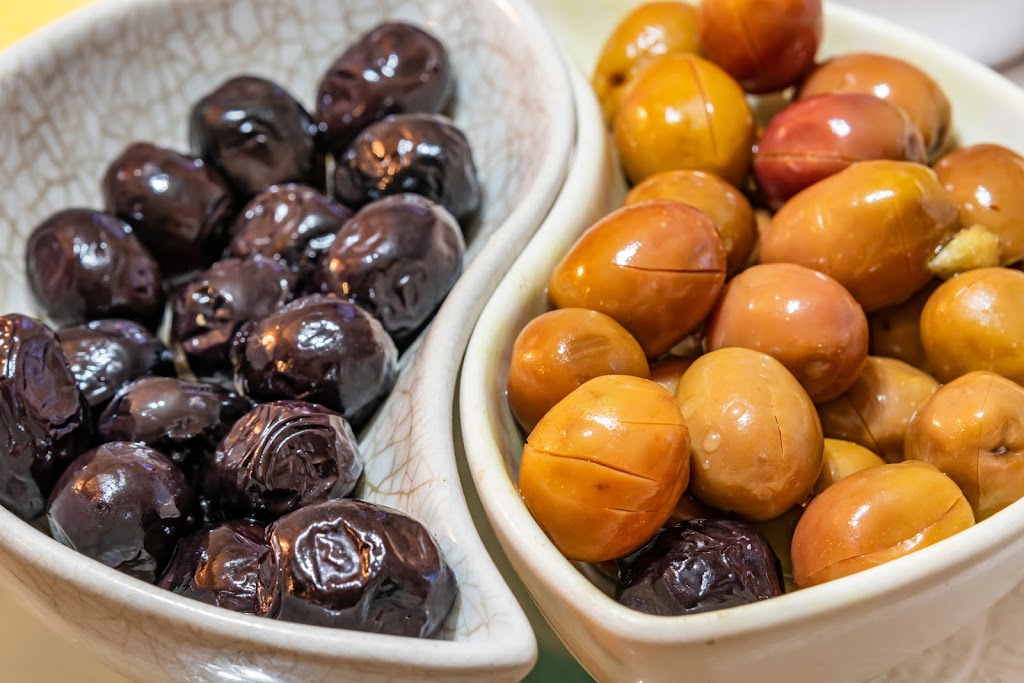The Aloe Vera plant isn’t the only natural resource found in either of the primary sources of Islam (Al-Qur’an and As-Sunnah). There are others and two that are often mentioned aloud in a congregation prayer are the fruits we call figs and olives, referred to in Arabic as ‘At-Tin‘ and ‘Az-Zaytuun‘. The way that these fruits have been mentioned in Surah At-Tin (the 95th Surah or Chapter in the Qur’an) signifies how important they are because Allah specifically swore by them.
However, as we leave At-Tin and Az-Zaytuun in their fruit context for a little while, it is important to note that some of the mufassirūn (the authors of tafsirs, a piece of commentary works that critically explain or interpret the verses of the Qur’an i.e. an exegesis of the Qur’an) have come to note that the fruitful terms reflect individual places on the planet. More precisely, they are referring to two distinct sacred locations and the reason behind them is due to the ensuing verses that are referring to other sacred places in Islam. The order of the ayat/verses concerned is as follows:
وَٱلتِّينِ وَٱلزَّيْتُونِ ١
By the fig and the olive ˹of Jerusalem˺, [1]
وَطُورِ سِينِينَ ٢
and Mount Sinai, [2]
وَهَـٰذَا ٱلْبَلَدِ ٱلْأَمِينِ ٣
and this secure city ˹of Mecca˺! [3]
[Surah At-Tiin, 95: 1-3; Translations by Dr. Mustafa Khattab, The Clear Quran]

A fig is mentioned in the Qur’an as ‘At-Tin‘ (ٱلتِّينِ)
The Tafsir of Ibn Kathir reveals a stunningly interesting explanation of the above ayats. Notice that the second ayat mentions ‘Mount Sinai’, the mountain upon which Allah ﷻ spoke to the Prophet Musa (Moses) ﵇. This was agreeable by Ka`b Al-Ahbar and several others. Then, the third ayat refers ‘secure city’ to mean Makkah (Mecca) – as per the opinions of Ibn `Abbas, Mujahid, `Ikrimah, Al-Hasan, Ibrahim An-Nakha`i, Ibn Zayd and Ka`b Al-Ahbar. On this, the opinions were unanimous9.
What then, of At-Tin and Az-Zaytuun as mentioned in the first ayat – what places do they refer to?
In this respect, Ibn Kathir notes a difference in opinions regarding them. Concerning At-Tin, Al-Murad mentions it as being the Mosque of Damascus (مَسْجِدُ دِمَشْقَ). Al-`Awfi reported from Ibn `Abbas that what is meant by At-Tin is the Masjid of Nuh that was built upon Mount Al-Judi. Mujahid said, “It is this fig that you have.”9
On the matter of Az-Zaytuun, Ka`b Al-Ahbar, Qatadah, Ibn Zayd and others have said, “It is the Masjid of Jerusalem (Bayt Al-Maqdis).” Mujahid and `Ikrimah said, “It is this olive which you press (to extract the oil).”9
Surely, there is wisdom in the mentioning of the above ayats which were then finally followed by the following ayat:
لَقَدْ خَلَقْنَا ٱلْإِنسَـٰنَ فِىٓ أَحْسَنِ تَقْوِيمٍۢ ٤
Indeed, We created humans in the best form. [4]
While the terms At-Tiin and Az-Zaytuun are more meaningful when we view from a location/place perspective, it cannot be denied that the two are nutritiously beneficial in sustaining one’s longevity and vitality. Science has already provided evidence into this and the fourth ayat above could not have served a better indicator, emphasizing the positive physiological impact that these two fruits have on the human body.
Nonetheless, we urge the interested reader to read more on the tafsir of this Surah to grasp its full meaning and interpretation until the last ayat.
At-Tin (Fig), Health Benefits
- High in fiber: Figs are a great source of dietary fiber, which aids in digestion and promotes bowel regularity. Fiber helps prevent constipation and maintains a healthy digestive system5.
- Antioxidant-rich: Figs contain various antioxidants, such as phenolic compounds, which help neutralize harmful free radicals in the body. Antioxidants play a role in reducing oxidative stress, protecting against chronic diseases, and boosting overall health5.
- Cardiovascular health: The phytochemicals present in figs contribute to heart health. They help lower blood pressure, reduce cholesterol levels, and improve blood circulation. Regular consumption of figs may help prevent cardiovascular diseases1.
- Weight management: Figs are relatively low in calories and contain dietary fiber. Including figs in a balanced diet can help promote weight management and aid in controlling appetite by providing a feeling of fullness1.
- Blood sugar control: Figs have a low glycemic index, meaning they have a minimal impact on blood sugar levels. This makes them a suitable choice for individuals with diabetes or those looking to maintain stable blood glucose levels1.
- Bone health: Figs are a good source of calcium, which is crucial for maintaining strong and healthy bones. Consuming figs can contribute to preventing bone diseases like osteoporosis and promoting bone density7.
- Digestive health: The high fiber content in figs can aid in preventing digestive disorders. It helps regulate bowel movements, alleviates constipation, and supports a healthy gut microbiome5.
- Potential anti-cancer properties: Several studies suggest that figs contain specific compounds that may have anti-cancer effects. These compounds have shown potential in inhibiting the growth of cancer cells, although further research is needed6.
- Skin health: Figs are a rich source of vitamins and minerals that contribute to healthy skin. They contain antioxidants that help protect against oxidative stress, which can contribute to premature aging and skin damage. Additionally, the water content in figs helps hydrate the skin8.
Advertisement: RahsiaShopify.com
Az-Zaytuun (Olive), Health Benefits
- Cardiovascular health: The consumption of olives and olive oil has been linked to improved heart health. The polyphenols found in olives can help reduce the risk factors associated with heart disease. Olive oil polyphenols have been shown to have a positive effect on cholesterol levels and blood pressure. The Mediterranean diet, which includes olives and olive oil, has been associated with a lower risk of cardiovascular diseases2, 3.
- Antioxidant properties: Olives contain various phenolic compounds with potent antioxidant activity. These antioxidants help protect cells from damage caused by free radicals. The polyphenols in olives have been found to have anti-inflammatory effects, which can contribute to overall health and well-being3.
- Anti-cancer effects: Some studies suggest that the consumption of olives and olive oil may play a role in cancer prevention. The polyphenols found in olives have been shown to exhibit anti-cancer properties in laboratory studies. The Mediterranean diet, rich in olives and other plant-based foods, has been associated with a lower risk of certain cancers, such as gastric adenocarcinoma2, 3.
- Diabetes management: Olive oil consumption, as part of a Mediterranean diet, has been linked to a reduced risk of developing type 2 diabetes. Polyphenols present in olives may improve insulin sensitivity and regulate blood sugar levels3.
- Weight management: Olives are a nutritious, low-calorie food that can be enjoyed as a healthy snack. The healthy fats in olives, particularly monounsaturated fats, can help promote satiety and decrease cravings. Incorporating olives into a balanced diet can contribute to weight control and healthy weight management3.
- Brain health: The high concentration of monounsaturated fats and polyphenols in olives can benefit brain health. These compounds have been associated with a reduced risk of cognitive decline and neurodegenerative diseases such as Alzheimer’s disease4.
- Digestive health: Olives contain dietary fiber, which promotes healthy digestion and aids in maintaining regular bowel movements. The polyphenols and other bioactive compounds present in olives may have beneficial effects on gut health by acting as prebiotics and supporting the growth of beneficial gut bacteria3.
- Sandhu, A.K.; Islam, M.; Edirisinghe, I.; Burton-Freeman, B. Phytochemical Composition and Health Benefits of Figs (Fresh and Dried): A Review of Literature from 2000 to 2022. Nutrients 2023, 15, 2623. https://doi.org/10.3390/nu15112623
- Guasch-Ferré M, Hu FB, Martínez-González MA, Fitó M, Bulló M, Estruch R, Ros E, Corella D, Recondo J, Gómez-Gracia E, Fiol M, Lapetra J, Serra-Majem L, Muñoz MA, Pintó X, Lamuela-Raventós RM, Basora J, Buil-Cosiales P, Sorlí JV, Ruiz-Gutiérrez V, Martínez JA, Salas-Salvadó J. Olive oil intake and risk of cardiovascular disease and mortality in the PREDIMED Study. BMC Med. 2014 May 13;12:78. doi: 10.1186/1741-7015-12-78. PMID: 24886626; PMCID: PMC4030221.
- Bucciantini M, Leri M, Nardiello P, Casamenti F, Stefani M. Olive Polyphenols: Antioxidant and Anti-Inflammatory Properties. Antioxidants (Basel). 2021 Jun 29;10(7):1044. doi: 10.3390/antiox10071044. PMID: 34209636; PMCID: PMC8300823.
- Alkhalifa AE, Al-Ghraiybah NF, Kaddoumi A. Extra-Virgin Olive Oil in Alzheimer’s Disease: A Comprehensive Review of Cellular, Animal, and Clinical Studies. Int J Mol Sci. 2024 Feb 5;25(3):1914. doi: 10.3390/ijms25031914. PMID: 38339193; PMCID: PMC10856527.
- Çalışkan, Oğuzhan. (2015). Mediterranean Figs (Ficus carica L.) Functional Food Properties. 10.1016/B978-0-12-407849-9.00056-7.
- Morovati MR, Ghanbari-Movahed M, Barton EM, Farzaei MH, Bishayee A. A systematic review on potential anticancer activities of Ficus carica L. with focus on cellular and molecular mechanisms. Phytomedicine. 2022 Oct;105:154333. doi: 10.1016/j.phymed.2022.154333. Epub 2022 Jul 10. PMID: 35952577.
- Idrus, R.B., Sainik, N.Q., Ansari, A.S., Zulfarina, M.S., Razali, R.A., Nordin, A., Saim, A.B., & Naina-Mohamed, I. (2018). Ficus carica and Bone Health: A Systematic Review. Sains Malaysiana. doi: 10.17576/JSM-2018-4711-17.
- Baby, D. P. (2022, December 9). Health Benefits of Figs. WebMD. Retrieved June 23, 2024, from https://www.webmd.com/diet/health-benefits-figs
- Quran.Foundation (n.d.). The Explanation of At-Tin and what comes after it. Quran.com. Retrieved June 23, 2024, from https://quran.com/95:1/tafsirs/en-tafisr-ibn-kathir
Advertisement: BisnesBakeri.com



No responses yet